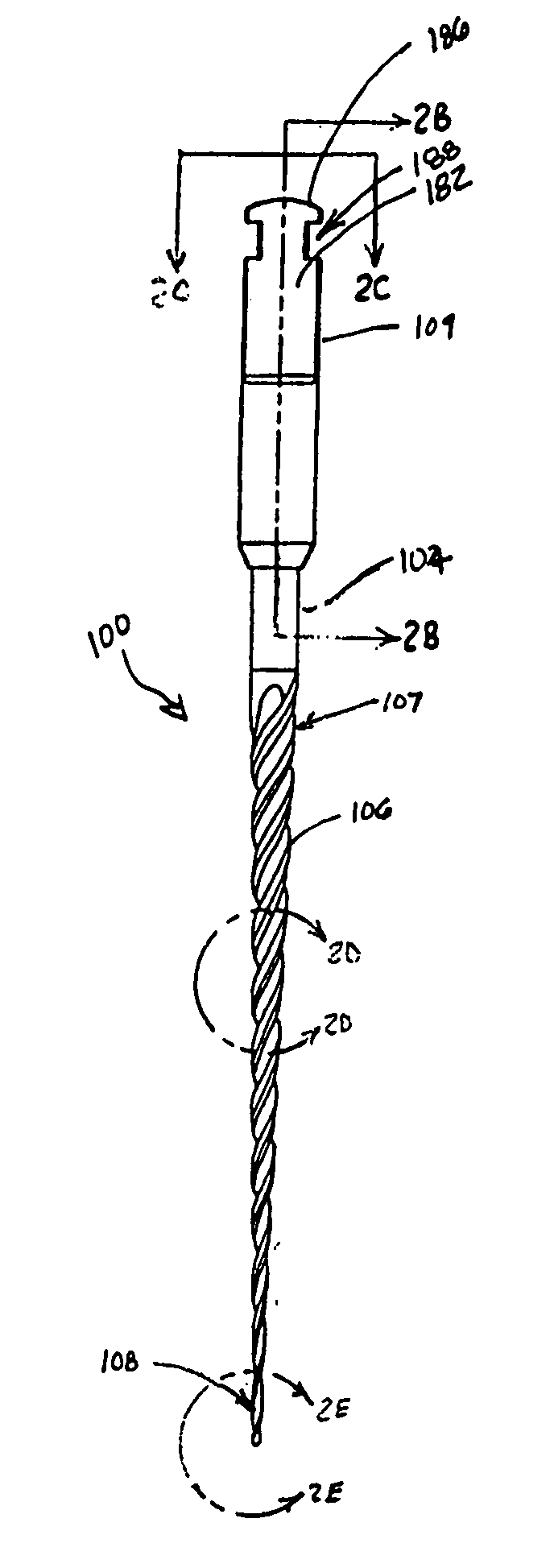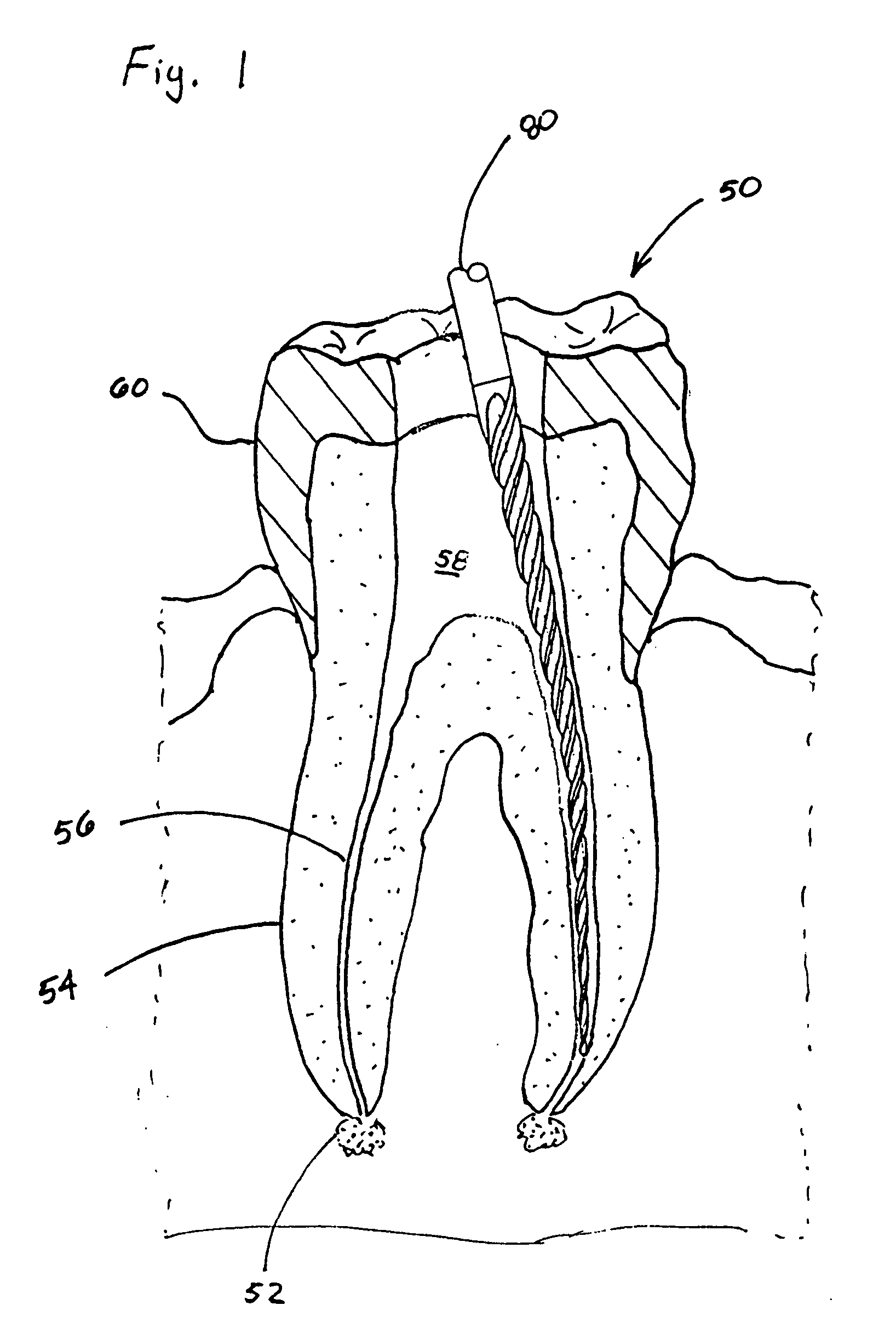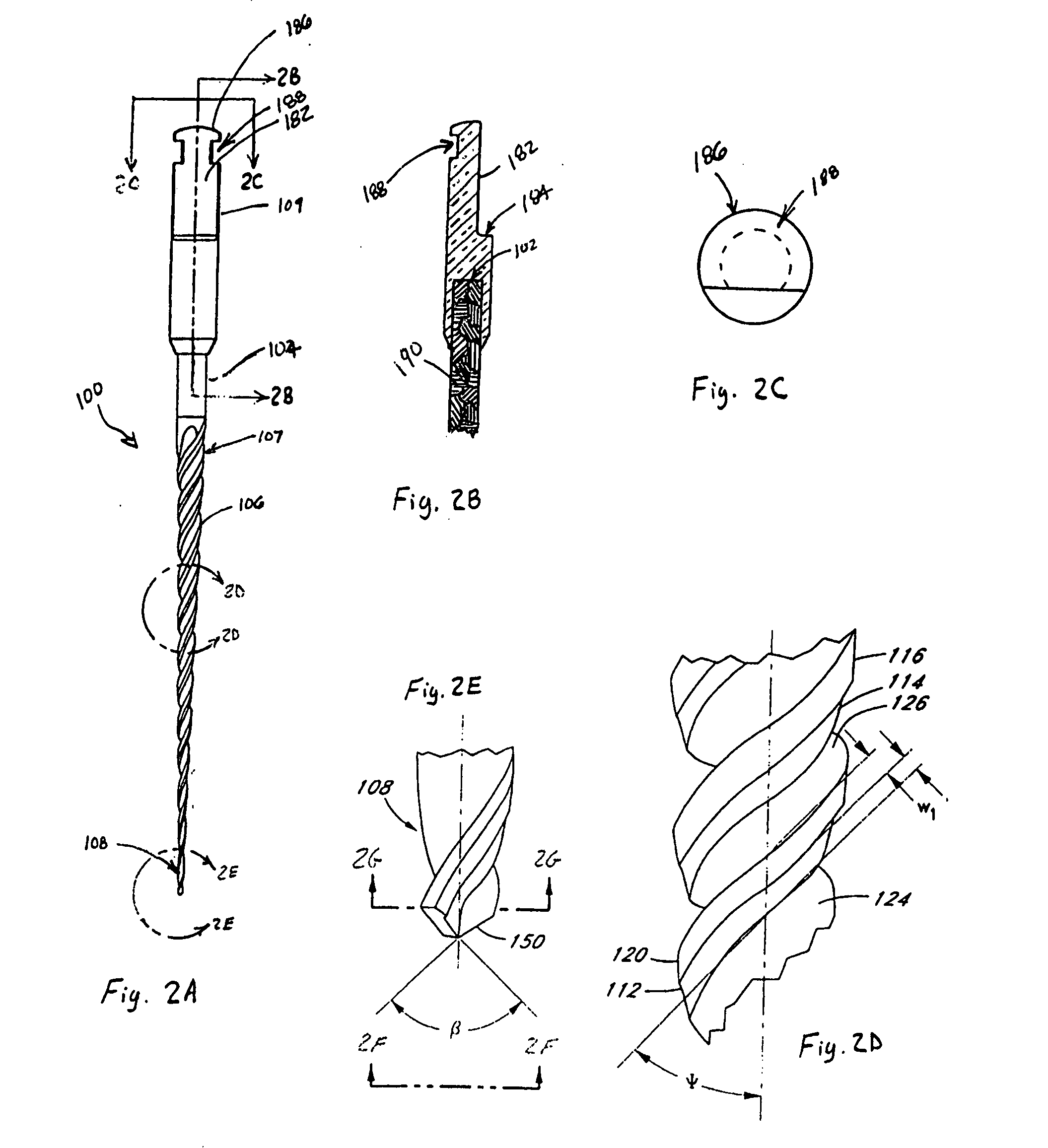Precision cast dental instrument
a dental instrument and cast technology, applied in the field of dentistry, can solve the problems of difficulty in gaining access to the full length of the root canal, tools can sometimes pose a significant danger of breakage in the curved root canal, and the expense and difficulty of machining endodontic files from niti alloy, so as to improve the lubriciousness and resistance to wear and breakage.
- Summary
- Abstract
- Description
- Claims
- Application Information
AI Technical Summary
Benefits of technology
Problems solved by technology
Method used
Image
Examples
Embodiment Construction
[0024]FIG. 1 is a partial cross section of a tooth 50 and supporting root structure illustrating the use of a typical fluted endodontic file 80 to carry out a standard root canal procedure. The root canal 56 of a tooth houses the circulatory and neural systems of the tooth. These enter the tooth at the terminus 52 of each of its roots 54 and extend through a narrow, tapered canal system to a pulp chamber 58 adjacent the crown portion 60 of the tooth. If this pulp tissue becomes diseased or injured, it can cause severe pain and trauma to the tooth, sometimes necessitating extraction of the tooth. Root canal therapy involves removing the diseased tissue from the canal 56 and sealing the canal system in its entirety. If successful, root canal therapy can effectively alleviate the pain and trauma associated with the tooth so that it need not be extracted.
[0025] To perform a root canal procedure, the endodontist first drills into the tooth 50 to locate the root canal(s) 56 and then uses...
PUM
| Property | Measurement | Unit |
|---|---|---|
| rake angles | aaaaa | aaaaa |
| length | aaaaa | aaaaa |
| length | aaaaa | aaaaa |
Abstract
Description
Claims
Application Information
 Login to View More
Login to View More - R&D
- Intellectual Property
- Life Sciences
- Materials
- Tech Scout
- Unparalleled Data Quality
- Higher Quality Content
- 60% Fewer Hallucinations
Browse by: Latest US Patents, China's latest patents, Technical Efficacy Thesaurus, Application Domain, Technology Topic, Popular Technical Reports.
© 2025 PatSnap. All rights reserved.Legal|Privacy policy|Modern Slavery Act Transparency Statement|Sitemap|About US| Contact US: help@patsnap.com



